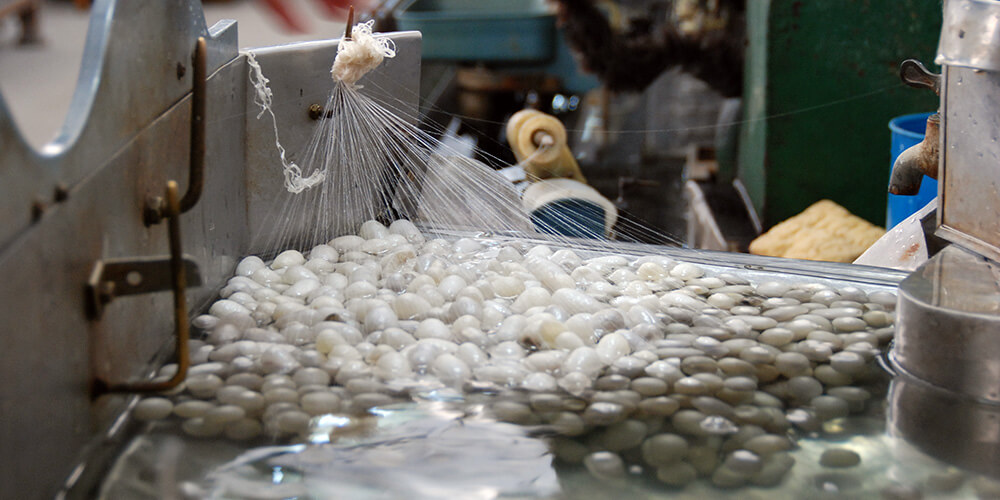Suzhou is the capital of silk in China, located one and a half hours from Shanghai.
There, we visited the renowned Humble Administrator’s Garden (from the 16th century), the very nice water village of Zhouzhuang (the Venice of the East), but even more interesting, a silk factory. Fascinating.
I learned a lot there about the legends, the history and finally the production of silk.
There is an actual production line where you can see:
- how they sort out the single silkworm cocoons and the double cocoons – the latter ones cannot be used for silk thread and are used for stuffing silk quilts, because the threads from the 2 silkworms inside are intertwined;
- how they steam the cocoons to soften their sticky gum;
- how they extract the silk strands from the cocoons (simply by brushing the cocoon with a little wooden broom);
- how they unwind the cocoons and gather several strands together to have a strong enough thread to weave.
You can also see a weaving loom in action, the production of the silk stuffing, and of course numerous silk products.
In conclusion, a great visit!
In Beijing, we also had the opportunity to visit a silk factory that had gorgeous copies of emperors’ silk robes, but unfortunately didn’t have a production line.
So, if you are in Shanghai, take the time to drive to Suzhou, I think it is worth it! Probably as interesting as the factory visit, is the history of silk and the legends associated with it.
There seem to be several stories on the origin of this exceptional Chinese discovery. According to Confucius, the Chinese princess Xi Ling was the first to reel a cocoon of silk, after dropping it in her cup of tea.
Another legend (told by our guide in Beijing) is that the princess thought it was a fruit, but was disappointed it was so hard and tried to soften it by boiling it in water. Both stories definitely have their charm, and of course, both talk to the true process of steaming the cocoon to extract its strand.
Silk is, indeed, quite a discovery (dating 2640 B.C.) which remained China’s secret for as long as 3000 years!
The Romans even brought back silk products from Asia but did not know anything about their making.
Finally, after 3000 years, silkworm eggs were smuggled by refugees to Korea and Japan and the silk industry started developing there.
Another story claims that a Chinese princess who married the Prince of Khotan secretly brought silkworms with her as a gift for her husband. Then the western world learned about its secret from two monks who hid silkworms in bamboo sticks.
It all starts with a special little worm eating mulberry leaves!

